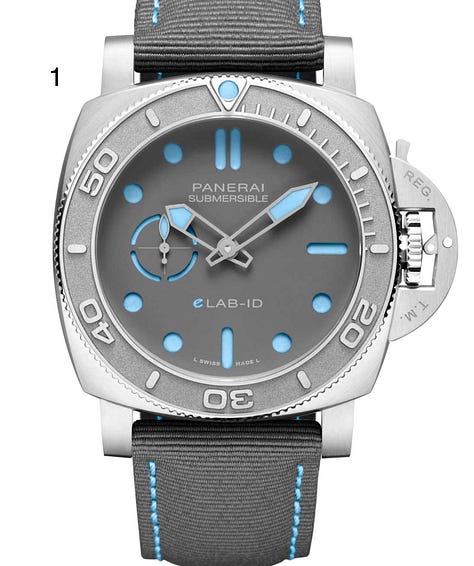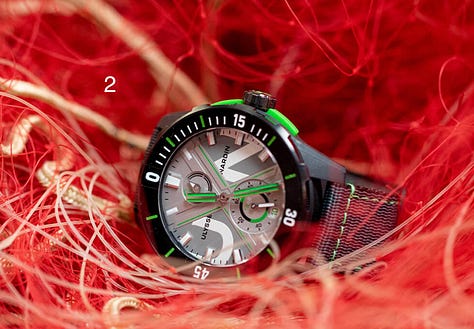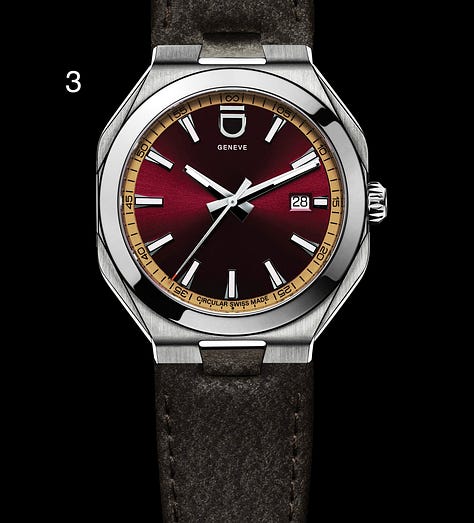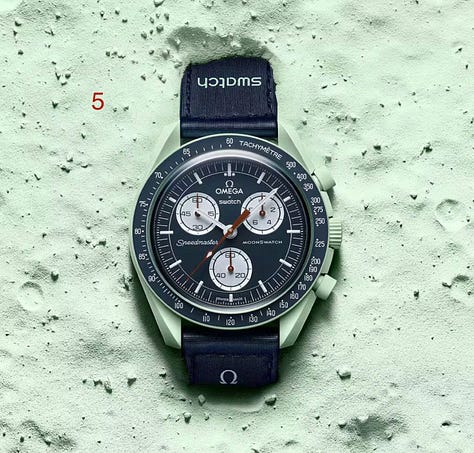Imagine strapping on a luxury watch that not only displays timeless elegance but also tells the story of a commitment to our planet's future. In an era where sustainability is no longer a luxury but a necessity, the high-end watch industry is undergoing a remarkable transformation. An increasing number of brands are harmonizing luxury with environmental stewardship, both in their production processes and end products.
The basics of a sustainable watch
A sustainable luxury watch integrates manufacturing processes and materials that minimize its environmental impact and promote social responsibility. For example, the use of recycled1 metals like gold, platinum, and stainless steel reduce the need for new mining, which is often harmful to the environment. Watches can also incorporate parts from vintage or discarded watches to minimize waste and decrease the demand for new resources. Eco-friendly straps made from materials such as recycled PET plastic, natural rubber, cork, or organic cotton offer sustainable alternatives to traditional leather or synthetic straps.
Sustainable manufacturing processes include using less energy or renewable energy sources, reducing waste, recycling scrap materials, and sourcing materials locally to cut down on transportation emissions. Designing durable and modular watches allow for repairs and upgrades, rather than full replacements, promoting longevity and reducing waste. Ensuring ethical labor practices, transparency in the supply chain, and corporate social responsibility further contribute to the sustainability of luxury watches. Brands can seek third-party certifications from recognized environmental and ethical standards bodies to validate their sustainability claims.
The premiumization of sustainable watches
You would expect sustainable watches to be less expensive than their conventional counterparts. After all, the materials they are made with are of less value. But this is not the case. Watches made with upcycled2 and recycled materials tend to be more expensive due to a combination of factors related to sourcing, processing, manufacturing, quality control, and market positioning.
Recycled and upcycled metals, such as gold and titanium, require additional processing to ensure they meet quality standards, making them more expensive than newly mined materials. Similarly, eco-friendly strap materials like recycled PET plastic, natural rubber, cork, or organic cotton often have higher production or procurement costs compared to traditional leather or synthetic straps.
Implementing energy-efficient practices or using renewable energy sources necessitates significant initial investments in advanced technologies and infrastructure.
Innovations in design and engineering play a crucial role in sustainable watchmaking. Creating watches that are durable and modular—allowing for repairs and upgrades instead of full replacements—requires advanced engineering and high-quality materials, which come at a premium.
Maintaining a transparent supply chain to verify the sustainability of materials and practices involves robust tracking systems and third-party audits, adding to the overall cost. Obtaining certifications from recognized environmental and ethical standards bodies, like the Responsible Jewellery Council (RJC) or Fairmined, also incurs costs for compliance and certification processes. Furthermore, funding environmental conservation projects and supporting local communities through corporate social responsibility (CSR) initiatives add financial burdens to brands, which are often reflected in the pricing of their products.
As surprising as it may sound, many buyers are willing to pay a premium for sustainable products, allowing brands to set higher prices that reflect the perceived added value and exclusivity of sustainable luxury watches.
Today’s sustainable watches
The luxury watch industry has made significant progress in incorporating sustainable practices and materials into their products. Here are some important examples of sustainable watches that reflect this commitment:
The Panerai Submersible eLAB-ID features a case, caseback, and bezel made from EcoTitanium™, composed of recycled titanium. The movement includes recycled materials, and the luminescent material on the hands and markers is made from recycled Super-LumiNova™.
The Ulysse Nardin Diver Net features a case, caseback, and bezel made from recycled fishing nets. The strap is made from recycled plastic bottles.
The ID Genève Circular 1 Grenat Edition puts emphasis on circular economy principles, modular design, and the use of recycled materials. It features a case made from 100% recycled stainless steel and recycled movement components.
In the Baume Skate Aurélien Giraud, the case is made of upcycled skateboard decks, combining aluminum and wood for strength, flexibility, and a lightweight feel. The dial is made of grip tape, a material typically used on skateboards, which gives it a distinctive texture. The strap is crafted from black cotton with a cork back lining for added comfort.
The Swatch MoonSwatch is considered sustainable due to its use of Bioceramic, a material that combines two-thirds ceramic with one-third bio-sourced plastic derived from castor oil. This innovative material is both durable and eco-friendly. The production process for Bioceramic involves fewer environmental impacts compared to traditional materials.
Semper & Adhuc watches use upcycled vintage movements. The movements are carefully restored and repurposed from old watches, giving new life to mechanical parts that would otherwise go to waste. The brand emphasizes using materials sourced locally in France to reduce their carbon footprint associated with transportation and logistics. Each watch is handcrafted.






Conclusion
Sustainability in the luxury watch industry is no longer a mere trend. By embracing environmentally sustainable practices, luxury watchmakers reduce their environmental footprint and cater to a growing consumer base that values sustainability. As the industry continues to innovate and adopt more sustainable practices, the future of luxury watchmaking looks set to be both elegant and environmentally responsible.
Reprocessed from used or waste materials and then used to create new products.
Waste or discarded items that have been creatively transformed into new products with higher value, quality, or functionality than the original material.


